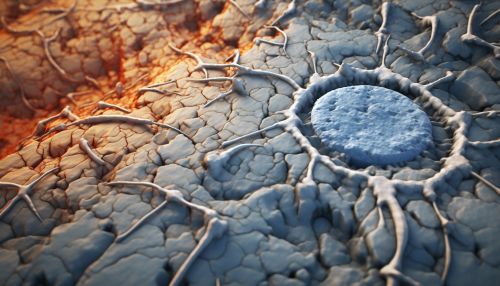Fovea centralis
Anatomy
The fovea centralis, often simply referred to as the fovea, is a small depression in the retina of the eye where visual acuity is highest. It is located in the center of the macula, the part of the retina that provides the clearest, most detailed vision. The fovea is responsible for sharp central vision (also called foveal vision), which is necessary for activities where visual detail is of primary importance, such as reading and driving.


Structure
The fovea is approximately 1.5 mm in diameter and is characterized by a high concentration of cones, which are the photoreceptor cells responsible for color vision. Unlike the rest of the retina, the fovea has no rods, the photoreceptor cells responsible for peripheral and night vision. This absence of rods in the fovea results in a small blind spot in the peripheral vision, which is not usually noticeable under normal viewing conditions.
The fovea is surrounded by the parafovea and perifovea, regions of the retina that contain a mixture of rods and cones. The density of photoreceptor cells decreases with increasing distance from the fovea, resulting in progressively lower visual acuity in the peripheral vision.
Function
The primary function of the fovea is to provide sharp central vision. This is achieved through a process known as foveation, in which the eyes rapidly move to align the fovea with the object of interest. These rapid eye movements, known as saccades, allow the fovea to scan the visual field and provide detailed information about the object of interest to the brain.
The high concentration of cones in the fovea also allows for high-resolution color vision. Each cone in the fovea is connected to a single neuron in the optic nerve, which allows for a high degree of spatial resolution. This is in contrast to the rest of the retina, where multiple rods and cones are connected to a single neuron, resulting in lower spatial resolution.
Clinical significance
Due to its crucial role in vision, damage to the fovea can result in significant visual impairment. Conditions such as macular degeneration, diabetic retinopathy, and retinal detachment can all result in damage to the fovea and a corresponding loss of central vision. In particular, age-related macular degeneration (AMD) is a leading cause of vision loss in older adults and often results in damage to the fovea.
In addition to these conditions, the fovea can also be affected by certain genetic disorders. For example, Stargardt's disease is a form of inherited juvenile macular degeneration that results in progressive damage to the fovea and surrounding macula, leading to a gradual loss of central vision.
